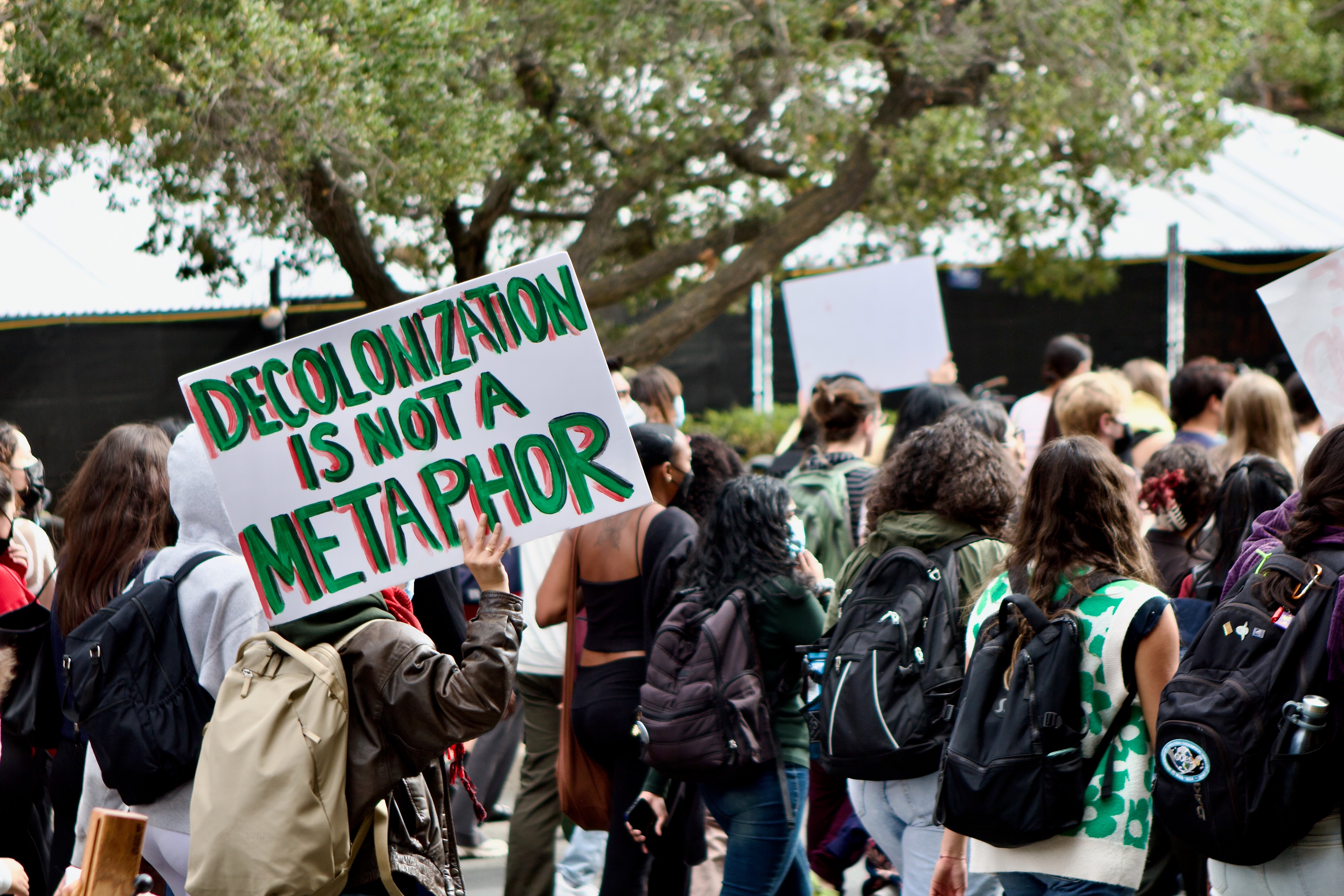Two University committees formed in the wake of the Israel-Gaza conflict found dozens of expressions of antisemitism and Islamophobia on campus.
In two 148-page reports released earlier this year, the Muslim Arab and Palestinian (MAP) Communities Committee and the Subcommittee on Antisemitism and Anti-Israeli Bias (ASAIB) outlined instances of harassment, intimidation and silencing of certain Stanford communities.
The two reports were released to the public on June 20 after being sent to the president and provost. MAP committee’s report states that MAP communities have felt fearful for their safety, disregarded by the University and “silenced through a variety of formal and informal means” when they expressed support for Palestine or participated in Pro-Palestine protests. The ASAIB subcommittee report, titled “It’s in the Air,” concluded that antisemitism and anti-Israeli bias is “widespread and pernicious” across Stanford’s campus.
Former President Richard Saller commissioned the committees to assess instances of anti-Palestinian and antisemitism discrimination within the Stanford community a month after the events of Oct. 7, 2023, when Hamas launched an attack on Israel that initiated the current Israel-Gaza conflict. Members of each committee — which include professors, staff, students and alumni — worked collaboratively to plan listening sessions, draft reports and produce recommendations on how to foster community and combat bias.
Larry Diamond ’74 M.A. ’78 Ph.D. ’80, a professor of sociology and political science, and Jeff Koseff M.S. ’78 Ph.D. ’83, a professor of civil and environmental engineering, co-chaired the ASAIB subcommittee. Abiya Ahmed M.A. ’19 Ph.D. ’21, the director of the Markaz Resource Center, and Alexander Key, associate professor of comparative literature, co-chaired the MAP committee.
Though the reports were delivered to administrators back in May, it is up to current President Jonathan Levin ’94 to implement changes, according to Natalie Jabbar ’09 M.A. ’10, a member of MAP committee and the associate director of Stanford’s Public Humanities Initiative.
Recognizing the University serves multiple committees addresses numerous issues, the MAP committee’s report provided a gradual recommendations timeline, outlining steps to be taken in the next year, five years and 10 years.
Though the reports were completed independently of one another, the two committees met to discuss differing recommendations between the reports. “We talked honestly about the fact that… they don’t see the world the same way as we do,” Koseff said. “We can talk openly about how they see things and how we do.”
One key difference between the recommendations in the two reports concerned discourse. While the ASAIB subcommittee report called for civil discourse and for increasing “open and respectful dialogue,” the MAP committee report endorses vibrant discourse characterized by student activist voices, which discuss where “the University itself can set the boundaries of legitimacy.”
The MAP report describes a “disparity in treatment between certain past protests and today’s pro-Palestine protests,” referring to historical student activism at Stanford, including anti-Vietnam War draft demonstrations, April Third Movement protests and civil rights campaigns.
A testimony shared in the MAP committee report highlights the experience of many Muslim, Arab and Palestinian students at Stanford since last October.
“How do I make myself small enough — to make people comfortable? What if I make someone else uncomfortable?” one student asks in the report. “What if I get shot for what I’m wearing?”
The ASAIB report also includes a timeline detailing instances of antisemitism at Stanford prior to last October and at other peer institutions. These include swastika-related vandalism, threats to “physically fight” Zionists on campus and a lecturer questioning the Holocaust.
Daniel Rashes ’26, co-president of the Jewish Student Association, said that the report “outlines the pervasive hold the current conflict has taken on the Stanford community.” The conflict has made Jewish students feel like they must “justify their identities or clarify their thoughts on Israel to be in good standing with their peers,” he noted.
In the report’s appendices, the ASAIB subcommittee details similar cases of bias at more than a dozen peer institutions, including Harvard University and UC Berkeley. Koseff believed that the implications of the report could be “broader than just Stanford” and may expand the conversation at a national level. When compiling the report, the subcommittee even communicated with their counterparts at Harvard University regarding a report of their own.
“Each campus has its own set of particular issues, but by and large, the basic themes — pluralism, education, civil discourse — they transcend… campuses,” he said.
Despite their focus on different communities at Stanford, both reports are centered around the same core understanding of a bias-free campus in which students feel safe.
“If you ask Alexander and Abiya about anti-semitism, there’s no place for it at Stanford. You ask Larry and me about Islamophobia, and there’s absolutely zero place for it,” Koseff said. “There’s no place for racial hatred, period, at Stanford.”
